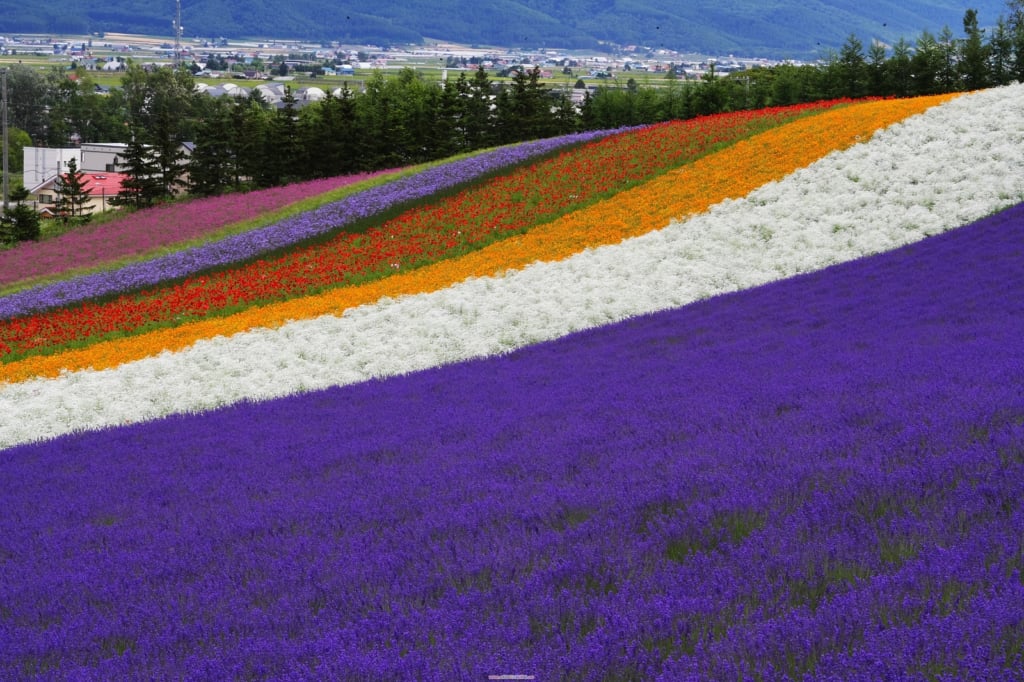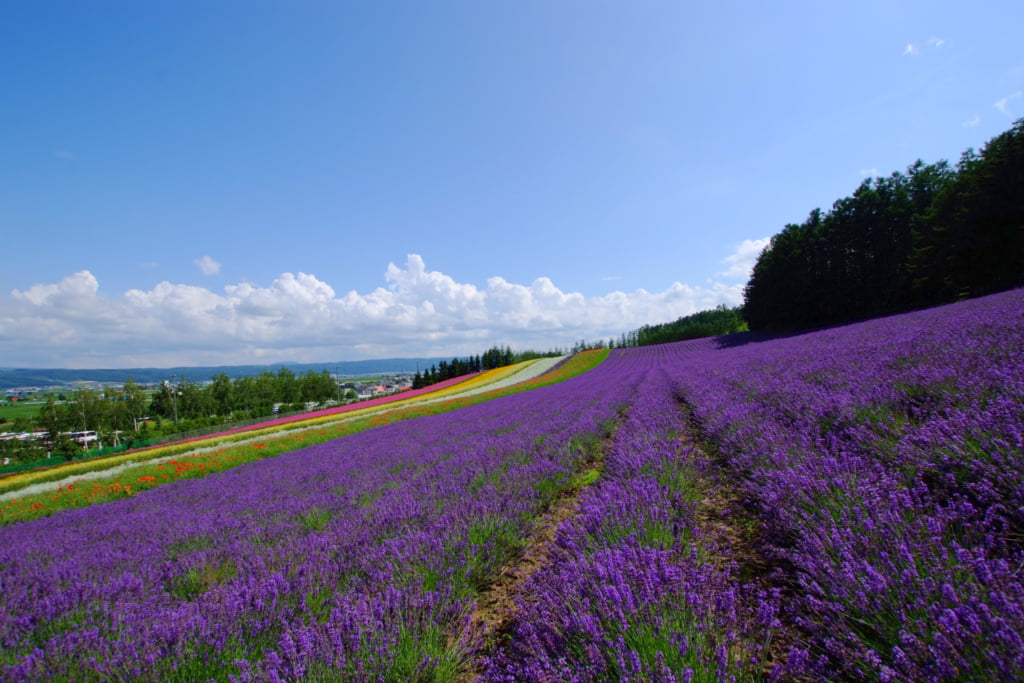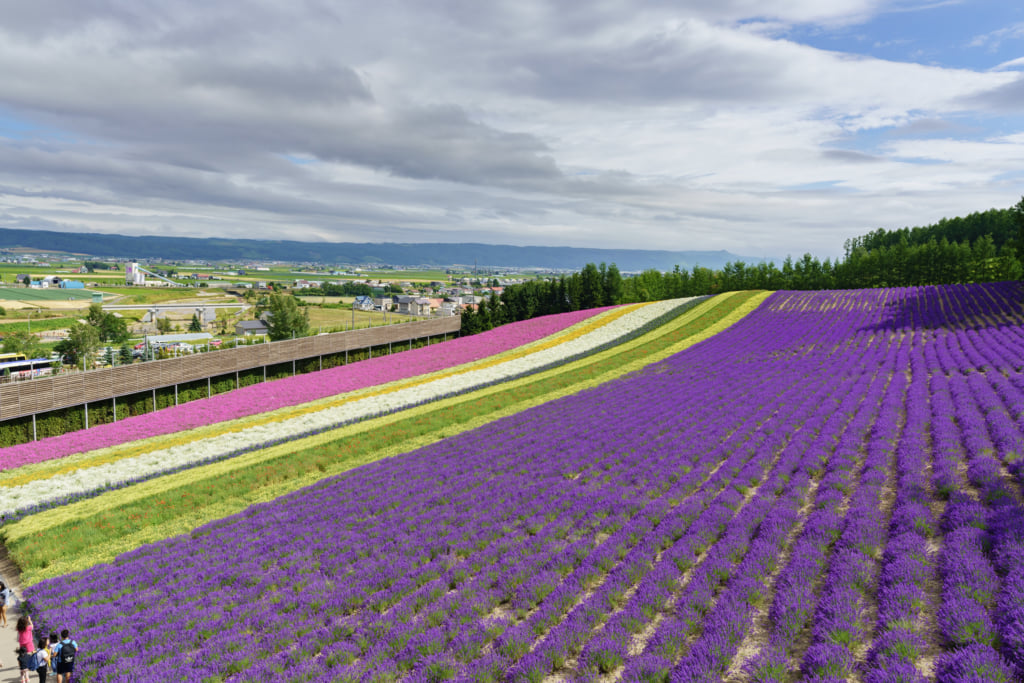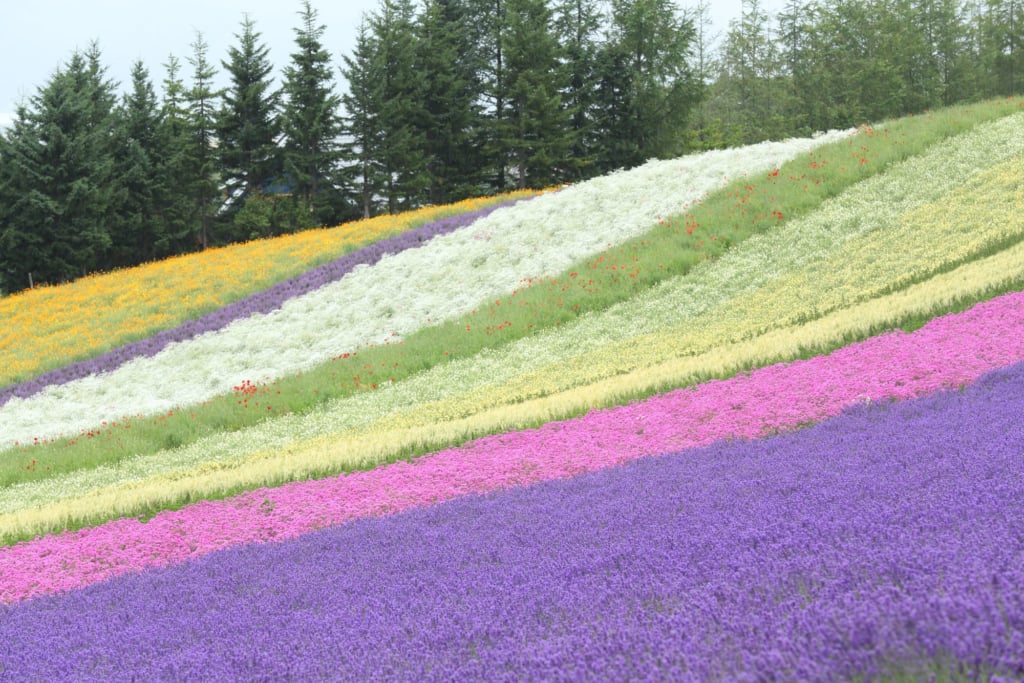Discover Furano’s Lavender Fields
Located in the heart of Hokkaido, this region is known for its vast lavender fields to which visitors flock every summer.

© JOMC
Located a two-hour train ride away from Sapporo, the largest city on Hokkaido—Japan’s northernmost island—are the small valleys of the commune of Furano. When summer comes, they take on a soft mauve colour. The area is one of Japan’s main lavender-growing regions, and the plants flower every year between early July and mid-August.
Lavender ice cream, lemonade, and tea
Over an area of several kilometres, multiple farms that specialised in the production of these melliferous (honey-producing) plants faced a considerable drop in demand in the 1970s, when low-cost lavender began to be imported into Japan. These farms were therefore converted into tourist attractions, selling various by-products like lavender-flavoured ice cream, cake, lemonade, and tea, or even mauve-coloured clothing.
To get to Furano from Sapporo, there are two options: the Furano Lavender Express or the Furano Biei Norokko Express, of which the latter only runs from June until September. Then, to see these lavenda no mori, which translates as ‘lavender fields’, it is best to use a vehicle as the different farms are a few kilometres apart, making it difficult to travel between them on foot. Alternatively, it is possible to board a tourist bus that stops at the different farms, but this option is particularly crowded in the high season.
More information on the lavender fields can be found on the Furano tourist office’s website.

© DR

© JOMC

© JOMC
TRENDING
-
A House from the Taisho Era Reveals Its Secrets
While visiting an abandoned building, Hamish Campbell discovered photographs the owner had taken of the place in the 1920s.

-
The Taboo-Breaking Erotica of Toshio Saeki
The master of the 1970s Japanese avant-garde reimagined his most iconic artworks for a limited box set with silkscreen artist Fumie Taniyama.

-
With Meisa Fujishiro, Tokyo's Nudes Stand Tall
In the series 'Sketches of Tokyo', the photographer revisits the genre by bringing it face to face with the capital's architecture.

-
Masahisa Fukase's Family Portraits
In his series ‘Family’, the photographer compiles surprising photos in which he questions death, the inescapable.

-
Hajime Sorayama's Futuristic Eroticism
The illustrator is the pioneer for a form of hyperrealism that combines sensuality and technology and depicts sexualised robots.





